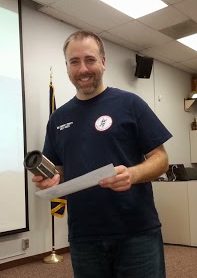 I have many varied interests and hobbies – if you can call an ever-growing pile of unfinished projects a hobby – ranging from physical sciences, electronics, computers, radio, and metalworking, to cooking, brewing beer, traveling, and studying languages. I have a bad habit of focusing very intensely on one or two areas for a while at the expense of others, and then switching when something else catches my attention – hence the unfinished projects. While it doesn’t (directly) involve cooking or brewing beer, it seems ham radio may be the closest thing I’ve found to pull my varied interests together (though I have some ideas rattling around that involve computers, electronics, and brewing).
I have many varied interests and hobbies – if you can call an ever-growing pile of unfinished projects a hobby – ranging from physical sciences, electronics, computers, radio, and metalworking, to cooking, brewing beer, traveling, and studying languages. I have a bad habit of focusing very intensely on one or two areas for a while at the expense of others, and then switching when something else catches my attention – hence the unfinished projects. While it doesn’t (directly) involve cooking or brewing beer, it seems ham radio may be the closest thing I’ve found to pull my varied interests together (though I have some ideas rattling around that involve computers, electronics, and brewing).
I’ve been interested in electronics since I was a kid. My dad was an industrial electrician and brought home lots of old electronics bits for me to investigate, though I must admit that most of my self-directed “investigation” involved more disassembly, desoldering, and sorting of components into parts bins, than learning and applying electronics theory. I do recall one particularly illuminating experiment I performed around the age of 8, which involved an electrolytic capacitor and an AC wall socket. See, I understood that capacitors would store a charge when connected in parallel with a DC source, but failed to grasp, until that moment, how they behaved in an AC circuit. A shower of sparks and a tripped circuit breaker taught me a valuable lesson or two.
All throughout my childhood, I maintained that same curiosity about electronics, but lacked an end to the means – a goal to which I could apply the concepts I was learning. I had books full of amplifier and power supply schematics, but what could I amplify? What would I power? I think all along I needed amateur radio to help guide and focus my interests, but I wasn’t even aware of its existence. The addition of a new family member in my middle school years – an 80286-based computer – sent me in a whole new direction, learning about programming, operating systems, and digital communications, which has in turn led to employment in technical support, software quality assurance, web development, system administration, and telecommunications.
Sometime around 1995, in my college years, I learned of amateur radio. I found it interesting but didn’t know anyone who was licensed, and didn’t have the time or money to pursue the hobby. When the Great Coastal Gale of 2007 cut off all communication with family on the southwest Washington coast, I felt helpless and thought again about amateur radio. I decided that earning my amateur radio license and getting trained in providing emergency communications would be one way I could make myself useful the next time a disaster struck our region. I studied hard and got my Technician license in January, 2008, then bought a J-pole and an old, used Kenwood TM-773, which I nervously sat in front of many a night before mustering the courage to key the mic and check into the Portland Amateur Radio Club’s Monday night net.
I went through the Portland Neighborhood Emergency Team training in the Winter of 2009, made my first long-distance QSO, with W6YX, via the U/v FM repeater on board the International Space Station, then upgraded my license to General. I checked into the occasional FM 2-meter net, and attended an ARES meeting or two, but otherwise remained fairly inactive until I attended the NET/CERT/ARES “radio tour” in May, 2012. That got me motivated to start volunteering for event communications, and by the end of the year I had worked at least 8 events and a fire station go-kit exercise or two, and I was hungry for more. Since then I have become more active in Multnomah County ARES, have helped organize communications for Walk MS and the Disaster Relief trials, and became the team leader for the PBEM ECC team.
In addition to emergency communications, I am also interested in amateur satellites, digital modes, software-defined radio, and, thanks to my success in the December 2013 MCARES contest-style drill-from-home and encouragement from K7ATN and others, I have a growing interest in VHF+ contesting. Maybe someday I’ll get on HF…
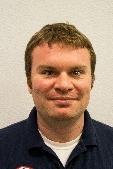 Greetings Fellow ARES Members,
Greetings Fellow ARES Members,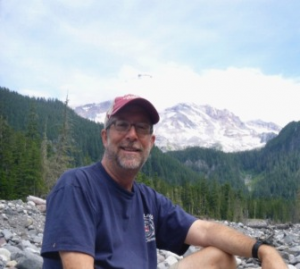
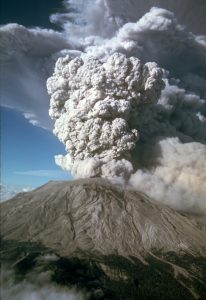
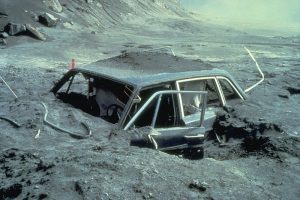
 I have many varied interests and hobbies – if you can call an ever-growing pile of unfinished projects a hobby – ranging from physical sciences, electronics, computers, radio, and metalworking, to cooking, brewing beer, traveling, and studying languages. I have a bad habit of focusing very intensely on one or two areas for a while at the expense of others, and then switching when something else catches my attention – hence the unfinished projects. While it doesn’t (directly) involve cooking or brewing beer, it seems ham radio may be the closest thing I’ve found to pull my varied interests together (though I have some ideas rattling around that involve computers, electronics, and brewing).
I have many varied interests and hobbies – if you can call an ever-growing pile of unfinished projects a hobby – ranging from physical sciences, electronics, computers, radio, and metalworking, to cooking, brewing beer, traveling, and studying languages. I have a bad habit of focusing very intensely on one or two areas for a while at the expense of others, and then switching when something else catches my attention – hence the unfinished projects. While it doesn’t (directly) involve cooking or brewing beer, it seems ham radio may be the closest thing I’ve found to pull my varied interests together (though I have some ideas rattling around that involve computers, electronics, and brewing).